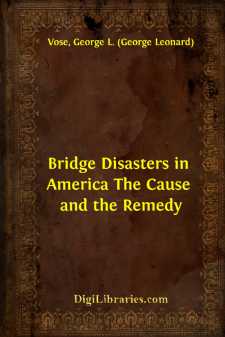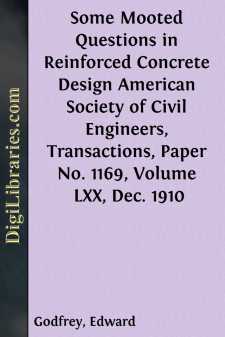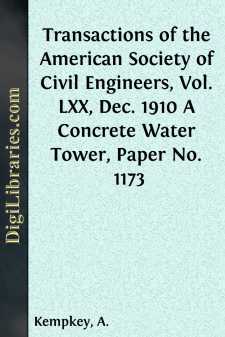Categories
- Antiques & Collectibles 13
- Architecture 36
- Art 48
- Bibles 22
- Biography & Autobiography 813
- Body, Mind & Spirit 142
- Business & Economics 28
- Children's Books 16
- Children's Fiction 13
- Computers 4
- Cooking 94
- Crafts & Hobbies 4
- Drama 346
- Education 46
- Family & Relationships 57
- Fiction 11829
- Games 19
- Gardening 17
- Health & Fitness 34
- History 1377
- House & Home 1
- Humor 147
- Juvenile Fiction 1873
- Juvenile Nonfiction 202
- Language Arts & Disciplines 88
- Law 16
- Literary Collections 686
- Literary Criticism 179
- Mathematics 13
- Medical 41
- Music 40
- Nature 179
- Non-Classifiable 1768
- Performing Arts 7
- Periodicals 1453
- Philosophy 64
- Photography 2
- Poetry 896
- Political Science 203
- Psychology 42
- Reference 154
- Religion 513
- Science 126
- Self-Help 84
- Social Science 81
- Sports & Recreation 34
- Study Aids 3
- Technology & Engineering 59
- Transportation 23
- Travel 463
- True Crime 29
Bridge Disasters in America The Cause and the Remedy
Categories:
Description:
Excerpt
BRIDGE DISASTERS IN AMERICA.
Nearly all of the disasters which occur from the breaking down of bridges are caused by defects which would be easily detected by an efficient system of inspection. Not less than forty bridges fall in the United States every year. No system of public inspection or control at present existing has been able to detect in advance the defects in these structures, or to prevent the disasters. After a defective bridge falls, it is in nearly every case easy to see why it did so. It would be just about as easy, in most cases, to tell in advance that such a structure would fall if it ever happened to be heavily loaded. Hundreds of bridges are to-day standing in this country simply because they never happen to have received the load which is at any time liable to come upon them.
A few years ago an iron highway bridge at Dixon, Ill., fell, while a crowd was upon it, and killed sixty persons. The briefest inspection of that bridge by any competent engineer would have been sure to condemn it. A few years later the Ashtabula bridge upon the Lake Shore Railroad broke down under an express train, and killed over eighty passengers. The report of the committee of the Ohio Legislature appointed to investigate that disaster concluded, first, that the bridge went down under an ordinary load by reason of defects in its original construction; and, secondly, that the defects in the original construction of the bridge could have been discovered at any time after its erection by careful examination. Hardly had the public recovered from the shock of this terrible disaster when the Tariffville calamity added its list of dead and wounded to the long roll already charged to the ignorance and recklessness which characterize so much of the management of the public works in this country.
There are many bridges now in use upon our railroads in no way better than those at Ashtabula and Tariffville, and which await only the right combination of circumstances to tumble down. There are, by the laws of chance, just so many persons who are going to be killed on those bridges. There are hundreds of highway bridges now in daily use which are in no way safer than the bridge at Dixon was, and which would certainly be condemned by five minutes of competent and honest inspection. More than that, many of them have already been condemned as unfit for public use, but yet are allowed to remain, and invite the disaster which is sure to come. Can nothing be done to prevent this reckless and wicked waste of human life? Can we not have some system of public control of public works which shall secure the public safety? The answer to this question will be, Not until the public is a good deal more enlightened upon these matters than it is now.
It has been very correctly remarked, that, in order to bring a disaster to the public notice, it must be emphasized by loss of life. The Ashtabula bridge fell, and killed over eighty persons; and a storm of indignation swept over the country, from one end to the other. No language was severe enough to apply to the managers of the Lake Shore Railroad; but if that very bridge had fallen under a freight-train, and no one had been injured, the occurrence would have been dismissed with a paragraph, if, indeed, it had received even that recognition. In February, 1879, a span one hundred and ten feet long of an iron bridge on the Chicago and Alton Railroad at Wilmington fell as a train of empty coal-cars was passing over it, and three cars were precipitated into the river, a distance of over thirty feet....












